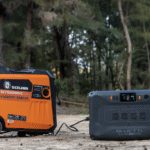Resilient Power Systems: Building a Stronger, More Reliable Grid
Why Resilient Power Systems Matter
The power grid is a critical infrastructure that underpins modern society, providing energy to homes, businesses, and industries. However, the grid is vulnerable to various threats, including natural disasters, cyber-attacks, and physical attacks. In recent years, we have seen a significant increase in the frequency and severity of power outages, which have significant economic, social, and environmental impacts. For instance, the 2013 blackout in the United States and Canada affected over 50 million people, while the 2018 hurricane season left millions without power in Puerto Rico.
The Need for Resilience
The need for resilient power systems is clear. A resilient grid is one that can withstand and recover from disruptions quickly and efficiently. This requires a multi-faceted approach that incorporates advanced technologies, infrastructure upgrades, and smart grid management. Some of the key features of resilient power systems include:
* Distributed energy resources (DERs) such as solar, wind, and energy storage
* Advanced weather forecasting and prediction systems
* Real-time monitoring and control systems
* Cybersecurity measures to prevent and respond to threats
* Enhanced grid resilience through the integration of microgrids and distributed generation
Building a Stronger Grid
Building a stronger grid requires a collaborative effort between utilities, government agencies, and technology companies. Some of the key strategies for building a stronger grid include:
* Upgrading infrastructure: This includes replacing aging infrastructure, upgrading transmission and distribution lines, and installing smart grid devices.
* Increasing DER adoption: This includes promoting the use of solar, wind, and energy storage, as well as integrating these resources into the grid.
* Implementing advanced technologies: This includes using advanced weather forecasting, real-time monitoring, and cybersecurity measures to enhance grid resilience.
* Developing workforce skills: This includes training utility workers and technicians on the installation, maintenance, and operation of advanced grid technologies.
Challenges and Opportunities
While building a stronger grid is essential, it is not without its challenges. Some of the key challenges include:
* Funding: Upgrading and expanding the grid requires significant funding, which can be difficult to secure.
* Integration: Integrating DERs and advanced technologies into the grid requires complex planning and coordination.
* Cybersecurity: The increasing use of advanced technologies in the grid creates new cybersecurity risks, which must be addressed.
* Workforce: The grid workforce is aging, and there is a need to develop new skills and training programs.
Despite these challenges, there are many opportunities for innovation and growth. Some of the key opportunities include:
* Energy efficiency: Advanced technologies can help reduce energy consumption and waste.
* Economic growth: A stronger grid can attract new businesses and industries.
* Environmental sustainability: Renewable energy sources and energy storage can help reduce greenhouse gas emissions.
Conclusion
Building a stronger, more reliable grid requires a collaborative effort between utilities, government agencies, and technology companies. It involves upgrading infrastructure, increasing DER adoption, implementing advanced technologies, and developing workforce skills. While there are many challenges to overcome, there are also many opportunities for innovation and growth. By working together, we can create a more resilient power system that benefits both people and the planet.
FAQs
What is a resilient power system?
A resilient power system is one that can withstand and recover from disruptions quickly and efficiently. This includes advanced technologies, infrastructure upgrades, and smart grid management.
Why is the grid vulnerable to disruptions?
The grid is vulnerable to disruptions due to its aging infrastructure, lack of redundancy, and increasing reliance on advanced technologies.
How can we improve grid resilience?
We can improve grid resilience by upgrading infrastructure, increasing DER adoption, implementing advanced technologies, and developing workforce skills.
What are some of the benefits of a resilient power system?
Some of the benefits of a resilient power system include reduced energy consumption, economic growth, and environmental sustainability.



_2.png?w=150&resize=150,150&ssl=1)


